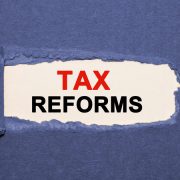Taxes & Cryptocurrency

According to HMRC, ‘cryptoassets’ are cryptographically secured digital representations of value or contractual rights that can be:
- transferred
- stored
- traded electronically
There are various types of cryptoassets including exchange tokens, utility tokens, and security tokens. HMRC does not consider cryptocurrency to be currency or money & their complete Cryptoassets Manual can be found HERE.
As far taxes are concerned, investing in cryptocurrency is akin to investing in other assets such as stocks, bonds, and the sale of rental properties. This means that capital gains and losses rules apply when you ‘dispose’ your assets, and in this case your cryptocurrency.
HMRC explains that disposals include:
- selling cryptocurrency for money
- exchanging cryptocurrency for a different type of cryptocurrency
- using cryptocurrency to pay for goods or services
- giving away cryptocurrency to another person
Any of the above situations subject any profits to Capital Gains Tax (CGT) and the simple formula for calculating capital gains (or losses) is:
Fair Market Value – Cost = Profit or Loss
The fair market value is the market price of the asset at the time that you sold, traded, or disposed of it. The cost is the price you paid at the time of the purchase.
Although this is a simple and logical calculation, calculating CGT on your profits becomes a bit more complex when you have multiple transactions to account for. The UK requires a specific type of method for calculating the cost basis of your coins known as Shared Pool Accounting also known as a 104 Pool.
With the shared pooled accounting method, you are essentially averaging out all of the costs you have incurred to acquire your crypto. You take these averages to come up with your cost basis per coin.
Things get a bit more complicated when you factor in two additional rules that apply with capital gains in the UK: the Same Day Rule and the 30-Day Rule.
These rules are in place to prevent ‘wash sales’, where an investor will purposefully sell or dispose of an assets that have decreased in value to then buy them back soon after as this would maximizes tax benefits by minimizing their capital gains.
The Same Day Rule
If you sell a cryptocurrency and buy again the same within the same day, the cost value for your sale will be the purchase price of the crypto you bought on the same day, even if the purchase of the cryptoasset takes place before the sale. The same day rules implies that the maximum number of CGT computations needed for one type of cryptoasset is only one per calendar day if a trade is done with it.
When cryptoassets of the same type are acquired and disposed of by the same person on the same day then:
- all the assets acquired shall be treated as acquired in a single transaction
- all the assets disposed of shall be treated as disposed of in a single transaction
The assets acquired will at best be matched with the assets disposed of so that those cryptos don’t go into the section 104 pool:
- if the quantity of assets acquired exceeds the number disposed of, then the excess assets will then be considered for the 30 day rule (see below) and if that doesn’t apply then they will go into the section 104 pool
- if the quantity of assets disposed of exceeds the number acquired then the excess assets will be considered for the 30-day rule (see below) and if that doesn’t apply then they will be treated as a disposal from the section 104 pool.
30-Day Rule
This rule states that any of the crypto you acquire within 30-days of a sale will be used as its cost basis.
If an individual disposes of assets and then acquires assets of the same type within the 30-days then:
- the same day rule (covered above) is applied first if applicable
- the assets acquired where the 30-day rule applies will not enter the section 104 pool but instead are matched to the earlier disposal(s)
- the assets acquired to which the 30-day rule applies are matched to disposals on the basis of earliest disposal first
- if the quantity of assets acquired exceeds the number disposed within the preceding 30-days, then the excess will go into the section 104 pool.
Each of these rules affect which cryptos you dispose of and the order in which you dispose of them.
So when calculating your gains/losses and applying these three rules, your cryptocurrency will be treated as being disposed of in the following order:
- Same Day Rule: assets acquired on the same day as the disposal are consumed first
- 30-Day Rule: assets acquired in the 30-days following the day of disposal
- 104 Pool accounting: all previous assets purchased where the price is averaged
To properly calculate your capital gains and losses, you need to have records for the price in GBP for every crypto asset you traded or sold at the time of the sale. Note that trading one cryptocurrency for another is a ‘disposal’, and you need to calculate the gain or loss in GBP on the trade.
Mining & Staking Crypto
Mining for cryptocurrency refers to the process of gathering cryptocurrency as a reward for work completed by actively putting computers in use to solve cryptographic equations. This process involves validating data blocks and adding transaction records to a public record (ledger) known as a blockchain.
Staking cryptocurrency is the process of actively participating in transaction validation (similar to mining) on a proof-of-stake (PoS) blockchain. On these blockchains, anyone with a minimum-required balance of a specific cryptocurrency can validate transactions and earn staking rewards. This can be the equivalent of earning dividends on shares.
Cryptocurrency received from mining or staking efforts is considered a form of income. The income you recognize is equal to the Fair Market Value of the crypto at the time you gained possession of the coin. The amount of income recognized then becomes the cost basis in the coin moving forward.
If you are mining as a ‘hobby’ or interest, your income has to be declared separately under the heading of “Miscellaneous Income” on your tax return. Appropriate exchange expenses can be deducted from this income before adding it to the taxable income, BUT costs such as the the computer components required to do the mining and the electrical cost associated are not expenses that can be claimed.
If you are mining as a business, your mining income will be added to trading profits and be subject to income tax. Appropriate expenses are also deductible such as computer components and electrical costs if they are used solely for this purpose.
In the UK, you only pay Capital Gains Tax if your overall gains for the tax year (after deducting losses) are above the Annual Exempt Amount (AEA). The Annual Exempt Amount for 2020/21 is £12,300 for individuals.
Under HMRC rules, taxpayers who do not disclose gains could face a 20% capital gains tax plus any interest and penalties of up to 200% of any taxes due. Furthermore, in August of 2019, HMRC announced that they are actively seeking cryptocurrency traders who have not reported gains. They are doing so by requesting user information from major cryptocurrency exchanges such as Coinbase and using this information to track down individuals who have for one reason or another avoided CGT on their cryptocurrency exchanges.
A final note to mention: Cryptoassets will be treated as property for the purposes of Inheritance Tax.
If you need any help filing or amending a self-assessment tax return for CGT, whether cryptoassests, stock, shares, or sale of rental properties, then please do not hesitate to contact Taxfile on 020 8761 8000. If you need to make a disclosure for past year earnings, we can help with that too.







